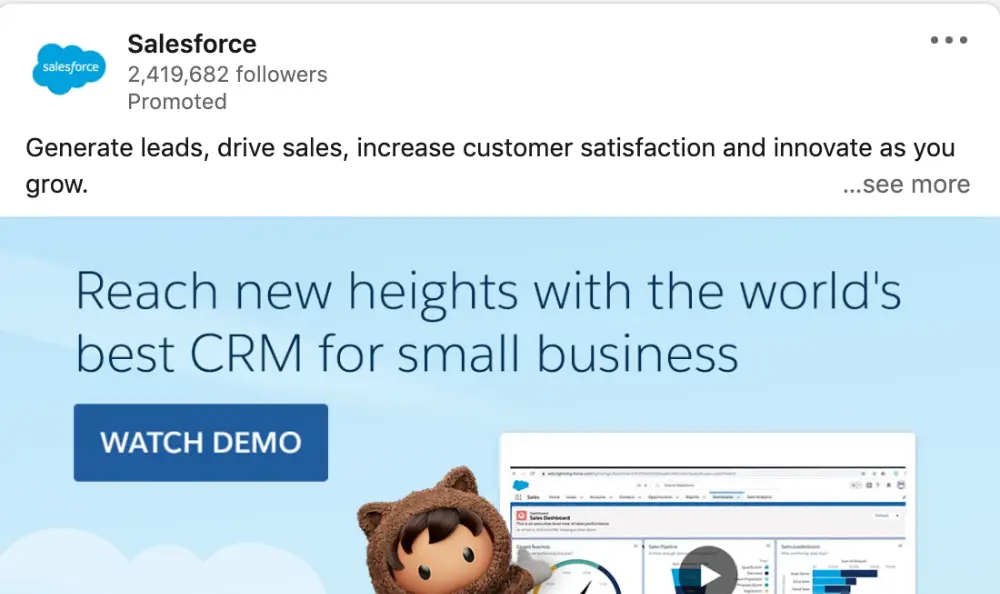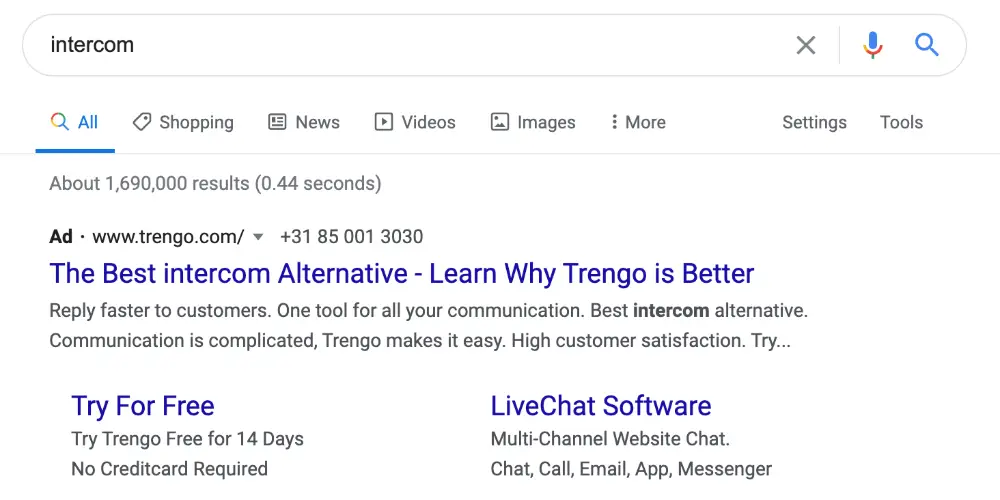This article has been contributed by Dorian Martin.
Copywriting can make or break affiliate marketing campaigns.

Compelling copywriting is an effective way for affiliate marketers to attract traffic and convert customers. Headlines are a major part of affiliate content success, so knowing various headline writing techniques is a must for decent ROI.
But the truth is that there’s no perfect headline formula for your affiliate niche. You, as a marketer and copywriter, will have to use your skills to make it work.
In this post, we’ll help you understand how to combine writing techniques with SEO tips to make high-converting headlines that bring in clicks and sales.
Headlines and SEO: What You Need to Know
Headlines rule the copywriting world for two reasons:
- Customers’ online reading habits
- Google ranking requirements.
Let’s begin with the first one. Most people don’t read content, they just “scan” it until they see something interesting. Since headlines – and subheadings, for that matter – are the most prominent content pieces, they’re easier to spot.
That’s why the vast majority of people who see your sales copy will only read the headings and subheadings. This rule doesn’t apply to ads – an ad is basically a headline – but it’s true for landing pages and blog articles.
Google is the next reason why headlines matter. Even the most creative and compelling headlines won’t work if they lack SEO optimization. This includes adding keywords that have been carefully researched and positioned to target a specific audience.
How to Write Irresistible Headlines for Affiliate Marketing
Here’s how to create compelling headlines for both Google and customers.
1. Understand Target Customers
Professional copywriters say that actual writing is just 20 percent of their work. The rest is research that helps to understand the intended audience.
This rule applies to affiliate marketing copywriting. To know how to appeal to certain people and drive action, copywriters must understand the audience’s goals, needs, and motivations.
Customer research is a pillar of a customer-driven marketing strategy. Since customer-focused businesses are 60 percent more profitable than product-centric ones, it’s a reasonable method to follow.
Research your customers with these tactics:
- Search through Quora and Reddit. These are places where people hold conversations about products and services you’re selling. Type a keyword related to your product/service and read through the conversations to find marketing ideas.
- Customer surveys. Both offline and online customer surveys are effective at gathering people’s thoughts about target topics.
- Keyword research. This will give you insights into how customers look for your products or services on Google. Compile the results in one master “keyword file” to refer to while writing headlines.
- Check competitor content. Your competitor’s affiliate landing pages and blog could be a source of keywords and ideas for better headlines.
Keep in mind that customer research isn’t a one-time thing. Refine your headlines by analyzing the performance of affiliate marketing campaigns and finding more customer information.
2. Use Keywords
Keywords are the bread and butter of SEO. If you want Google users to find your affiliate content, you must use keywords. And the more relevant they are for the target audience, the better your SEO is.
Keyword research is done well with tools like Google Keyword Planner of UberSuggest (both of which are free).
To optimize headlines with keywords:
- Use them in a natural way. A headline that sounds weird because of keywords is suggestive of spam to consumers.
- Put them in the beginning. Having keywords at the beginning of headlines helps to grab attention and makes it easier for Google to “understand” your content.
- Never use keywords with spelling mistakes. Some misspelled keywords might have nice search volume but are totally worthless. Why? Just think how bad such a headline would look – spam or a computer-generated message.
Example of Natural Keyword Use
Let’s suppose you need a headline and a subheading for an affiliate campaign landing page. The target keyword is housekeeping.
Here are two ways to go about it.
Bad example
- Heading: “Need Housekeeping Services?”
- Subheading: “People use ABC for housekeeping because our budget-friendly housekeeping services are top-rated”
Good example
- Heading: “ABC Housekeeping”
- Subheading: “Your go-to service for quality and affordable housekeeping”
The natural use of keywords in any affiliate content requires some good copywriting skills. To become a better copywriter, keep reading.
3. Ask a Question
Writing a headline as a question is a good way to increase affiliate blog engagement. This way, you’re prompting readers to think about the answer, which, in turn, makes them want to find it out. So they will be more likely to click compared to a statement-style headline.
This headline from a vegan cooking blog is relevant to its intended audience. So, it’s likely to generate curiosity.
Image source: yourvegankitchen.com
To make a headline irresistible:
- Use a question your audience can’t answer easil If they can, the headline won’t generate curiosity and, therefore, clicks. For example, “Is this stand mixer right for your kitchen?” is likely to get the reader to try and answer.
- Tie the question to the affiliate campaign’s product. You’ll make describing its benefits easier in the content.
- Avoid questions the customers are likely to say “no” to. If you were to ask, “Are you making these 10 marketing mistakes?” on a cooking blog, the visitors would easily dismiss the headline.
The perfect question-based headline sparks curiosity. Achieving that without good knowledge of the campaign’s target customers is extremely difficult, so do your research. When you know customer needs, it’ll be easier to come up with meaningful headlines.
4. Mind the Length
When it comes to writing headlines, less is always more. Search engines and social media advertising engines prefer headlines of a certain length to keep them organized and focused.
Keep them in mind when writing headlines:
- Keep blog titles between 50 and 55 characters. This length ensures a full display in Google search results.
- Social media ad headlines should be between 20 and 40 characters. Longer headlines are accepted, according to Facebook for Business guides, but might be automatically cut by the platform.
Type your blog titles in To The Web free preview tool. It shows character count in real time, so it’ll be easier to stay within limits.
Also, remember that staying within recommended meta title and description limits is a part of blog SEO. Keywords and appropriate length are essential to get your affiliate campaign content to rank higher in search engine results
5. Add Brackets
Words in brackets at the end of headlines is one way to increase clicks. Google users prefer brackets – in fact, headlines with bracketed clarifications perform 33 percent better than those without, says Hubspot.
Take a look at this headline. It allows people to know how much time they need plus an important detail – “yeast-free” – before they even click to read the piece.
Image source: minimalistbaker.com
Brackets can work better for your affiliate marketing blog content because they:
- Provide more clarifications
- Help customers manage their expectations
- Give additional content details.
One more thing – experiment with adding brackets somewhere in the middle of headlines, e.g., “How to (Realistically) Write Headlines that Deliver Clicks.”
6. Use Numbers
List posts with numbers in headlines are very popular. A number supposedly gives potential readers a better idea of what to expect (e.g. “8 Ways to Lose Weight”) and provides a better structure to content.
According to an OkDork study, list posts receive more social media shares than “how-to” articles and even videos. This means your affiliate campaign can get a boost on social media if you use lists.
Image source: thelifestyle-files.com
To attract more visitors with numbered headlines:
- Use the number 10. This specific number had the most social shares in the above-mentioned OkDork study.
- Cite a percentage where possible. If your blog article summarizes results of research, use one key percentage result in the headline, e.g. “75% of Kitchen Aid Users do This Wrong.”
- Combine a number with brackets. For example, if you have a post with 6 tips, present the sixth one as a “bonus” instead of a number – “5 Tips to Smarter Shopping [+Bonus Tip!]”.
Keep in mind that you’re not limited by using only simple numbers. There are also metrics, statistics, percentages, and other techniques to try out.
For example, a percentage can be a good idea to improve an affiliate campaign’s landing page (e.g. “Join 10,000 Marketers Achieving 350% Higher ROI with [Your Product]”).
7. Recognize a Problem and Solve it
This headline formula focuses on a specific pain point of customers. The goal is to mention a problem and indicate that your content can help to solve it. By doing so, you can give headlines a special appeal to people looking for solutions.
The (very simple) formula is:
Problem + Solution
Note that the headline shouldn’t give away the solution or describe it – only mention that the content piece can help.
Here are a few headlines examples to illustrate:
- “Get Rid of [Problem] Once and for All with This Trick”
- “This Method Helped [Audience] Solve [Problem]”
- “Struggling With [Problem]? You’ll Like These X Tips”
- “Finally, Take Control of Your [Problem] With This Simple Method”
As you can see, you can tweak the formula in many ways. The most important thing is to appeal to readers by indicating that you understand their worries and feelings. This way, you’ll make your campaign or blog headlines truly irresistible.
Start by finding out the fear, problem, or issue your audience has. What does it cause them to feel every day? Is it difficult to solve it?
Find answers to these questions, and writing click-worthy headlines will become much easier.
8. Focus on Customers’ Goals
Another way to make an irresistible headline is to include the desired outcome your customers are looking for. This way, you can convince more people to click your ads, as they’ll want to see what you propose.
Take a look at this ad headline from Salesforce – it speaks to those looking to “Generate leads, drive sales, increase customer satisfaction and innovate…”
Image source: LinkedIn
The subheading in the image provides extra support. It says the customer can “Reach new heights”, summarizing the previous benefits and tying them to the product – a CRM app for small business.
This formula makes it easy to add keywords. In the Salesforce case, the customer is likely to be looking to “drive sales” or “generate leads” – which are great keywords – rather than “the world’s best CRM for small business.”
Google supports this. If you search for “small business crm,” this is how many results it displays.
Looks like a lot, right? Still, “generate leads” attracts 5 times more results, suggesting that more people prefer this keyword combination.
So, a customer’s goal-based headline gives the desired outcome while hitting keywords. This makes it a good starting option to try and test in affiliate campaigns.
9. Compare Your Brand to Competitors
This headline technique appeals to those looking to compare a few products or services before trying them out. Many customers – especially in the B2B industry – are using Google to find comparison content, as they want to learn how to get the best value for their money.
By mentioning your competitor in an ad or blog title, you can:
- help your potential customers by giving a head-to-head comparison of features, pricing, and the like.
- control the conversation – the comparison will be made on your terms.
For example, if we search for Intercom, a live chat provider, the first ad that pops up is a competitor company, Trengo.
By using this approach, Trengo is looking to get some traffic from a bigger competitor. The headline promises to show “..Why Trengo is Better,” which might appeal to customers looking for Intercom alternatives.
If you decide to go after competitors this way, here are more headline ideas:
- “[Your Product] vs. [Competitor]: A Side-by-Side Comparison”
- “The Best Alternative to [Competitor]”
- “[Your Product] – [Competitor] Alternative You Deserve”
- “[Competitor] Alternative: Get More Value for Less with [Your Product]”
- “[Your Product] vs. [Competitor]: Which Tool is Better in 2020?”
- “Tired of [Competitor] High Price? Try [Your Product] – from $X/mo”
Be reasonable and fair in your content – customers will notice one-sided comparisons. Try to focus on the strengths of your product – a feature, a lower price, etc – and explain why it’s better for a specific audience.
10. No Clickbait
“First 100 visitors to this site get $1,000.”
Sounds too good to be true, right? That’s the basic idea of clickbait – to get you to click on something that doesn’t have any value. It’s a form of false advertising where content overpromises or misrepresents information to attract clicks.
Unfortunately, research has found about 20 percent of headlines in the media to be clickbait. Since this unethical advertisement technique is still rife, it’s good to remember avoiding it.
Big companies like Facebook have been battling clickbait by penalizing content creators. To avoid penalties, deliver value to customers, and ultimately make affiliate campaigns profitable in the long term, don’t create clickbait headlines.
A better way to make headlines attractive on visual mediums is with stunning font combinations – these will give offer a visual appeal as a bonus.
Summary + Next Steps
Writing headlines for affiliate campaigns is both a science and an art. On top of a ton of research, there’s a bunch of limits, best practices, and requirements from Google to follow closely.
Understanding all of these will increase your traffic, clicks, conversions and improve your ability to connect with online audiences.
To get there, remember the tips from this guide:
- Do target customer research to understand what motivates them to click
- Use keywords to improve Google ranking
- Ask questions to spark curiosity
- Stay within the accepted limits to have headlines displayed fully
- Add brackets to give customers extra clarifications
- Use numbers to get more clicks
- Focus on the customer’s goal to “speak” to those who want to achieve it
- Compare yourself to competitors
- Never write clickbait headlines – they ruin customer trust.
Seeing some headline examples can give you more ideas for yours. Sound good? Take a look at the ultimate list of 100+ blog heading templates and examples for inspiration!
_
About the author: Dorian Martin is an experienced content writer who covers best writing practices and marketing strategies. As an editor at EssaySupply, he helps empower clients to grow by improving their ability to connect with their own customers via quality content.







